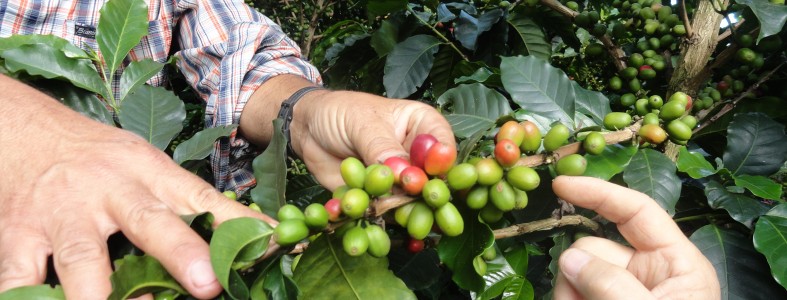
Flipping the Script
“In a market so closely tied to the “C price”, the solution is for the farmers to spend less and produce more.”
-Molly Laverty, Sustainability Manager – Farmer Brothers Coffee
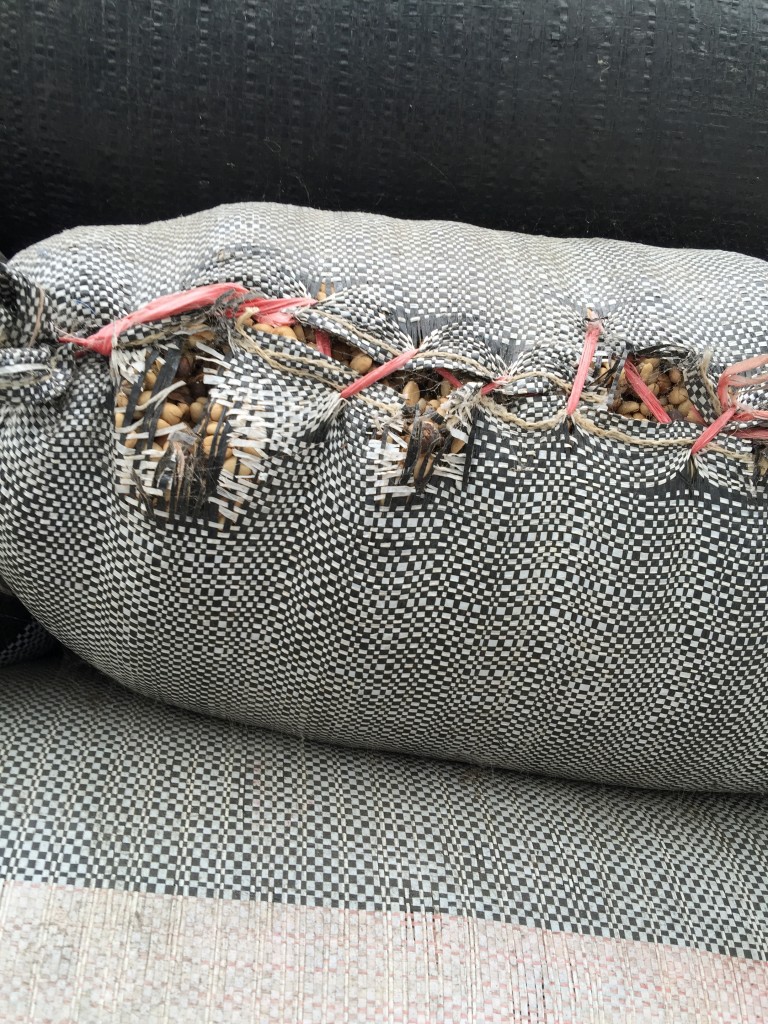
Sometimes, the effort to make ends meet for everyone looks a little like this bag. A leading industry lunatic said, in a public forum a few weeks prior to IWCA, “In every supply chain somebody will get screwed. The question is simply, who do we choose to screw and how much?”
After scooping my jaw off the floor, I paused to give what Ms Laverty said consideration. Its easy to have a knee jerk reaction. Rather than lighting my torch and grabbing my pitchfork, I decided to ask for clarification when the floor opened up.
For the unfamiliar, coffee futures trade on the Stock Exchange, and the C price is the price at which the base level of Specialty Grade coffee is trading. “The C” varies based on market activity, and maybe weather changes in Brazil, and has minimal if any direct connection to the cost of production, the value of the item, or the price a roaster can charge at home. Typically a coffee is purchased with a ‘differential’ above or even below the C price. A coffee could be sold anywhere from -$0.60 below the C price to +$1.50 above the C price.
Low grade specialty coffee is most often purchased based on the C price. The better the coffee, the more likely it is that the roaster and farmer came to a price agreement based on the value of the coffee (basically, what the roaster can sell it for).
With that explained, lets rewind to the beginning of the presentation I am writing about. At the 2015 International Women’s Coffee Alliance conference, one of many panels to grace the stage contained a representative of every step in the coffee supply chain of a major company. They are investing heavily, and have a very positive message. The representative proudly announced,
“We want to impact the industry beyond our own supply chain”
Who is this forceful voice speaking about their aggressive investments in Specialty Coffee? You may be surprised.
McDonald’s
Via the companies who supply it, McDonalds is huge in coffee, and huge in ‘certified sustainable’ coffees. They stated that 32% of the coffees they purchase are Fair Trade, Rainforest or UTZ certified. Betcha didn’t know that! That is a higher percentage of certified coffees than we buy at Swell. Betcha didn’t know that either!
Farmer’s Brothers supplies a lions share of MacDonald’s coffee, and the panel before us at the International Women’s Coffee Alliance presentation showed how their integrated approach to sourcing works. The panel consisted of a range of stakeholders. including a farmer, and agronomist, a representative of the FNC, The Farmer Bothers’s Sustainability manager, and even two representatives of McDonald’s, one of whom recently received her Q grader certification. MacDizzle wants to be taken seriously, and they are. They buy a tremendous amount of coffee, and that means they wield serious influence.
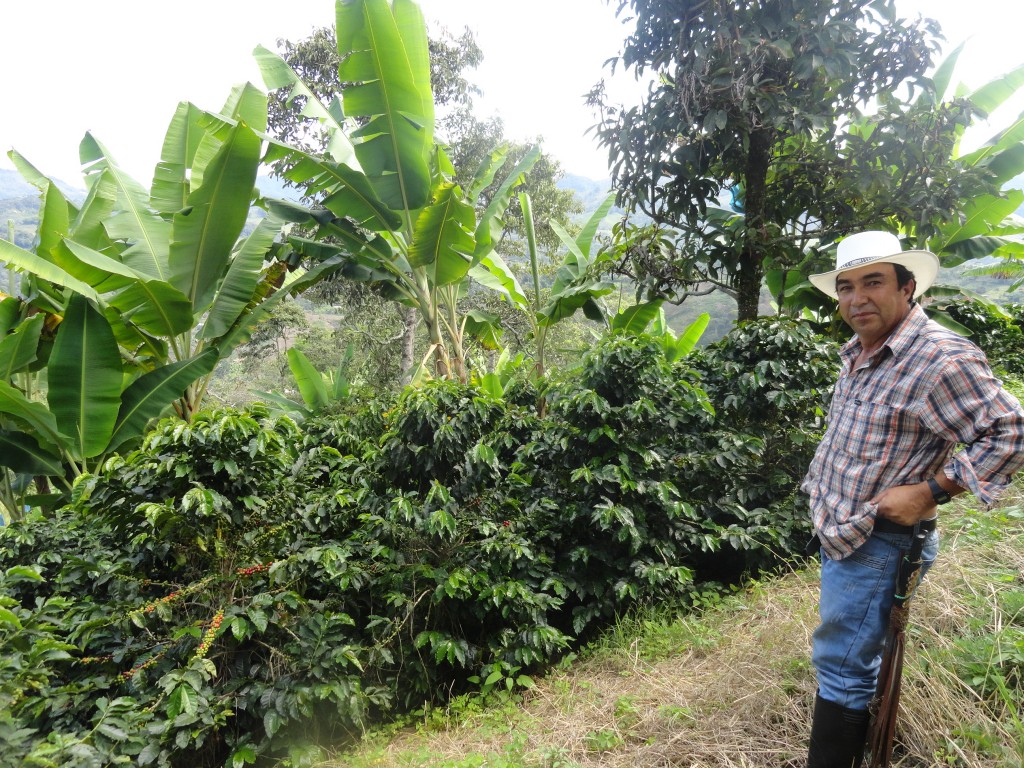
I would get in over my head quickly speaking in technical terms about any relationship between high production, spacing, biodiversity and contagious fungus like La Roya. I do know that the farm shown grows only Castillo and Colombia for the sake of resistance and highyield I also abserve that farms with a little more are able to sustain other varieties.
Via their Sustainable Coffee program MacDonald’s is investing over 6 million dollars in 4.5 years, in the form of technical assistance, training, and other support for the farmers who participate, which is impressive, and to be commended. It is a sourcing model “based on what is actually happening on the ground, the only way a sustainability model can work.”
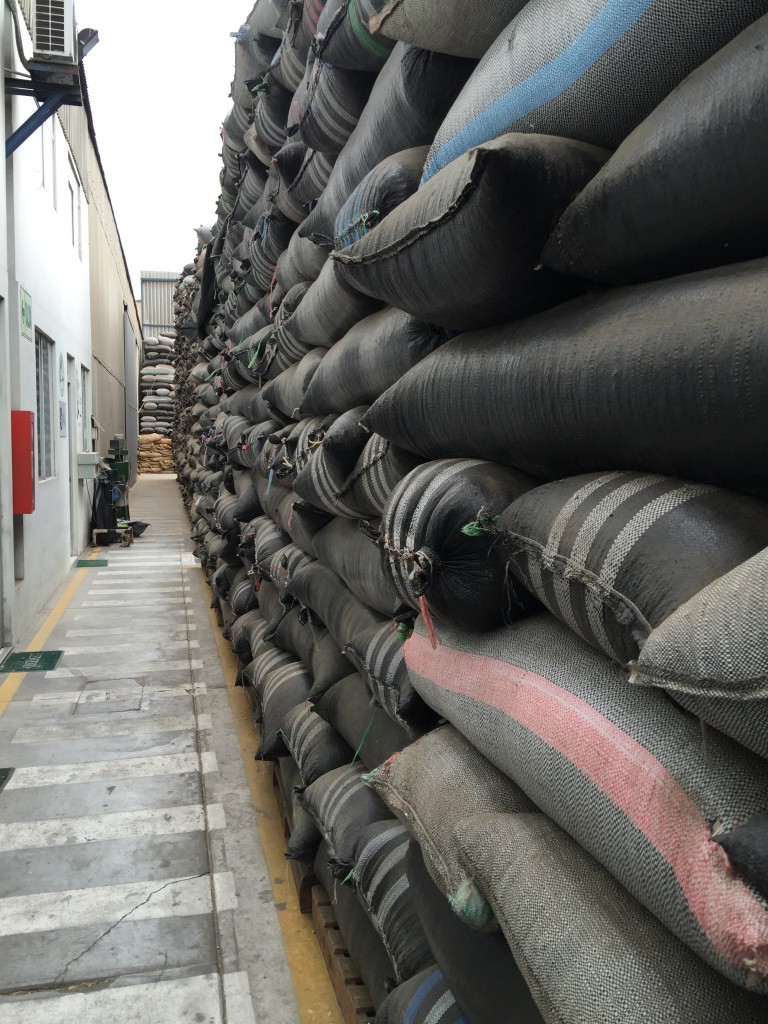
Producing coffee at high volume requires some serious planning and involvement with suppliers and more so if one is going to attempt to source with an angle of sustainability or ethics.
Molly Laverty from Farmer Brothers described the direct trade program as having been born out of practical needs. MacDonald’s requires a verification process for how things function at source. They really want to be involved in how things work at origin. The program produced a characterization study, a working group, and set priorities for problem solving.
Low cost specialty coffee is riddled with problems that have stumped advocates for years. Health, education, infrastructure and economic challenges abound in coffee regions. Companies in consuming nations are often competing on price. The partnership of Farmer Brothers and McDonald’s is working on a solution, and its the solution proposed at the beginning of this article.
The farmers should spend less and produce more.
This is something many businesses strive to do. Produce more, with less. Business 101. The idea itself is commonplace. But I had questions.
I’m not much of a speaker so I choked on my words. Maybe my throat tried to squash the words it wasn’t comfortable with before they escaped. Though my throat did not, I actually did want to know the response. So I somehow managed an uncharacteristically trembly,
“You just said that in a market so closely tied to the C, the solution is for farmers to produce more and spend less. Please elaborate on the genuine impracticalities of working on a pricing system other than “the C”, or in a down market like we currently have, just paying the producers a stable price as a solution.”
To explain, both unreasonable highs and unreasonable lows have a negative effect on the whole supply chain. Recently we have been in a sustained down market for coffee. One solution for achieving a sustainable source of coffee which many roasters choose, is to negotiate a price for the coffee based on how much they can sell it for. The roaster looks at her own costs and expected revenue, and negotiates with that in mind. A relatively intuitive system. I was proposing something I have experience with using in both low and high markets.
“Good question. It’s something we talk about a lot”
Laverty explained that the costs of production at the farm go up during a high market, and drop in a down market (I believe this to be untrue, and plan to interview multiple farmers on the topic, but that’s another post).
Laverty explained that every farm is different, every region is different. Farmer Brothers is not capable of knowing the costs on every farm in the program. If Farmer Brothers doesn’t know the costs, they cannot set a price, based on the current system. She went on to explain that Farmer Brothers absorbs costs associated with market fluctuations that might otherwise overwhelm the farmers, and expressed that the company has a genuine interest in supporting their supply chain.
The majority of coffee roasters source in a way that is tied to the C market in some way, whether they are fully aware of it or not. Differential pricing simply is, and it is not the end of the world. The partnership between MacDonald’s and Farmer Brothers is not a program I want to throw stones at.
Two things were communicated that made the presence of this specific panel on the stage seem contradictory to the intentions of the IWCA program.
- An expressed belief that a coffee buyer should know the farmer’s cost of production in order to decide a price for the coffee regardless of value. Roasters think about the cost of production, and we should, but IWCA should not be training ladies to expect to open their books, and let the buyers tell them how much money they are allowed to make. We are training women to be employees rather than business owners.
- Would the average roaster let a farmer check his books to find out how much he planned to mark that coffee up? No. Smart farmers are keenly aware of how much their coffee is going to sell for and set their prices accordingly, and they should, but they aren’t up in the roasters books.
- A paternalistic set of investments that direct both trends in production, and the expectations of the ladies producing.
- Training and support are both great. Is the content angled toward the specific needs of their current client in a way that generates dependence? Could it redirect or control the overall direction of coffee produced in the region? I don’t want my favorite farms impacted by a high efficiency MacModel. Because I’m nice? NO! I’m actually not very nice. But I have a belief that independent thinkers create amazing things, and I want to serve amazing coffee, not just clean and sweet with some caramel and chocolate notes. (AKA please don’t impact the industry outside your supply chain to too much!)
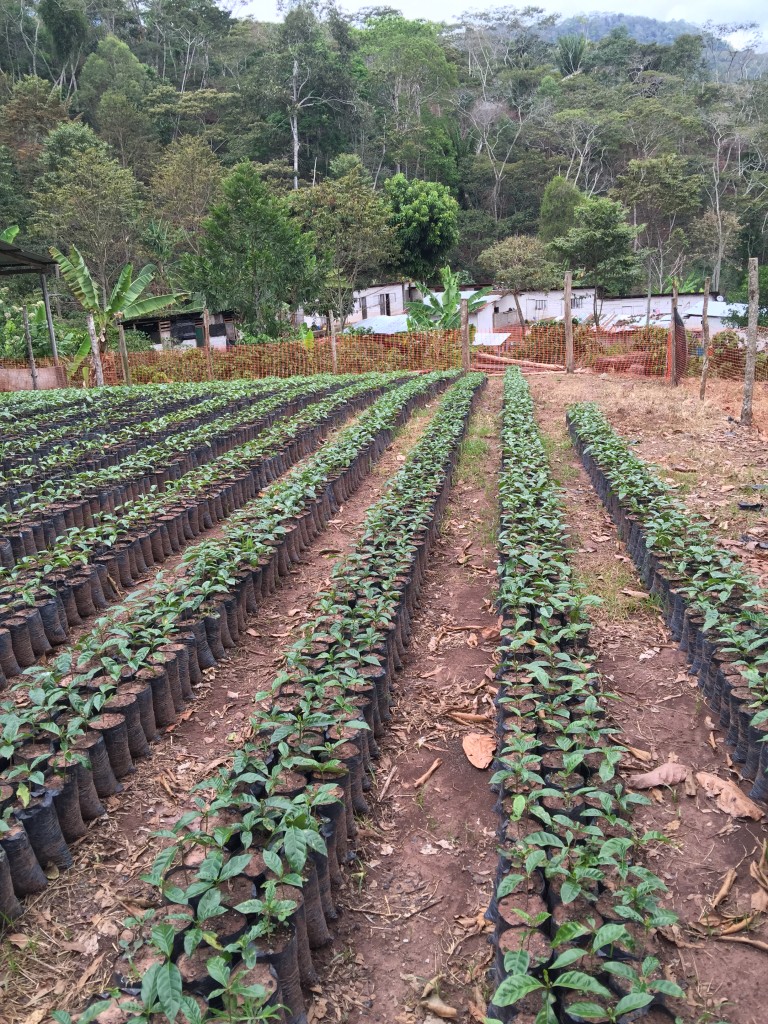
Rows of tiny coffee soldiers ready to be deployed on the hillsides nearby. Resistant to disease, high production varieties that fit the sourcing model. Much debate about the favored Castillo variety was heard at the Expo.
In the world of Specialty Coffee we talk night and day about the difference between specialty coffee and commodity coffee. We send a message to our customers that we are a breed apart. We promote amazement with the range or experiences different coffees can provide.
At what point is Specialty Coffee which is produced and purchased based on a low cost/high volume model controlled by the C price actually just commodity coffee? That question is really not so important, but I think the one below is, if we want to retain the Amazement we market so heavily.
Are we ready for a pricing model based on value rather than cost?
After the presentation, a vibrantly energetic professor from Emory University handed me his card. Peter Roberts is working on practical ways to to encourage a model based on value rather than cost. Part of the project is a platform where direct trade roasters can publish the FOB price (essentially the price to the farmer). This program, Transparent Trade Coffee, shows the buyer, not just how much was paid to the farmer, but also shows what percentage of the retail price is coffee price.
-Interesting-
This is a great tool for consumers interested in the topic. The public appears to be losing interest in certifications in some markets. Is this a next step? What else can be done?
We talked about handheld pricing tool for the producers, maybe with a couple sliders to provide some norms based on a tight range of inputs and expected percentage. It might not change pricing at all, but it might change the thinking behind it. Everything starts with a mindset. And a mindset that one controls one’s own business is paramount to and movement that supports women. A step toward considering the whole system into which their efforts are being sold.
I won’t pretend this is a complete solution, but it is important work and the IWCA can play a role in it, as an organization founded on flipping the script.
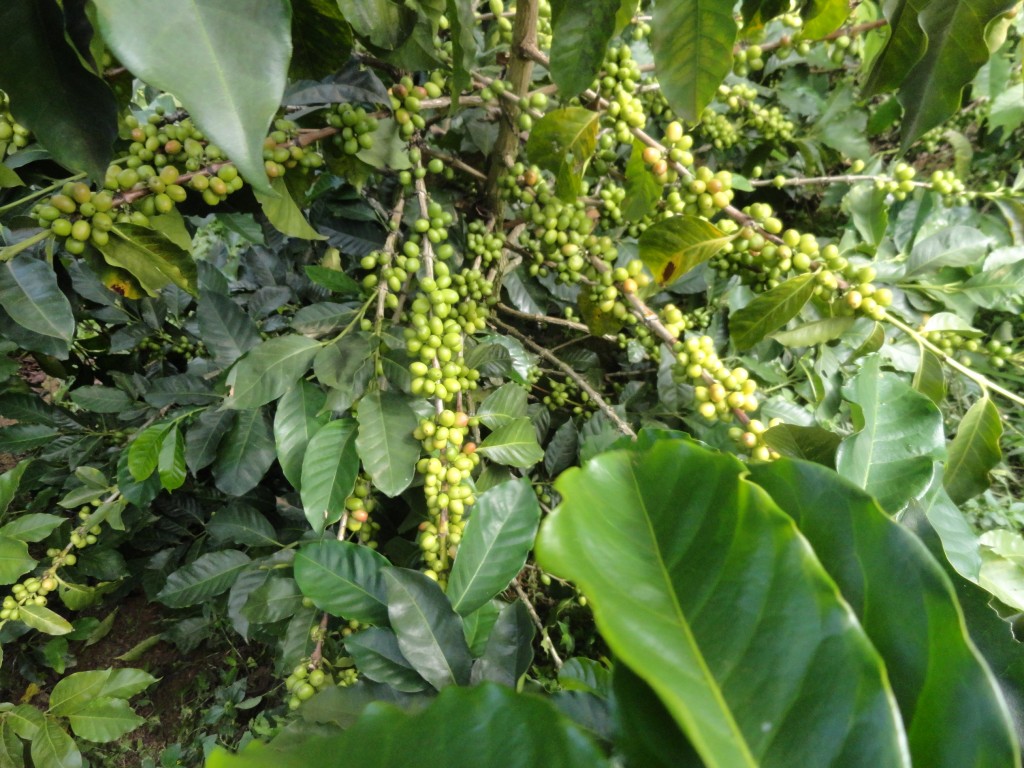
Lovely coffees ripening on the tree. A healthy plant producing fruit is always lovely and I can never seem to stop taking pictures of coffee cherries in any and every stage!
After a glum evening, and pensive breakfast I looked forward to continuing the discussion. Fortunately on the next day Ric Rinehart during his presentation about the US market, didn’t just talk about the US market. He spoke at length about trends toward single cup and Specialty Coffee, but fundamentally what he said can be summed up in three important statements taken from the talk.
“The C market does not care about you”
“Corporations as such cannot care about you”
and more importantly
“If consumers want to know where their coffee is coming from, the ladies at IWCA should know where it is going”
He could not possibly have been more on point. He exhorted the ladies to find out for themselves where their coffee was going, and think in terms of their role in that product. It was a dose of tough love for those ready to hear the importance of the messages of the last few days. He let them know that nobody has their backs. He advised them to value themselves and their products. Not to be patronized.
“Don’t let your coffee be thrown in a generic pile when your coffee deserves better than that, when you deserve better than that”
What he said did place responsibility for their success in their own hands. We all know that it can sometimes be easier to be told what to do. It can be easy to follow a leader, and there is security in it much of the time. Sustainability has it limits. The representatives of this specific sustainability program defined their goal as to simply maintain a long term supply that without collapse or threat of interruption. The upside is that starving farmers cant make coffee. The question is fully independent and educated ones would continue to sell in the same manner.
I’m the first to say that not everyone has any desire to be fully independent. Farmers appeared very very interested in joining the program, which is completely full and take no new participants. The support they provide is likely laudable.
I remain convinced that the message delivered should fall flat on IWCA ears, and hope that in coming seasons we see practical tools for independence handed out from the stage.
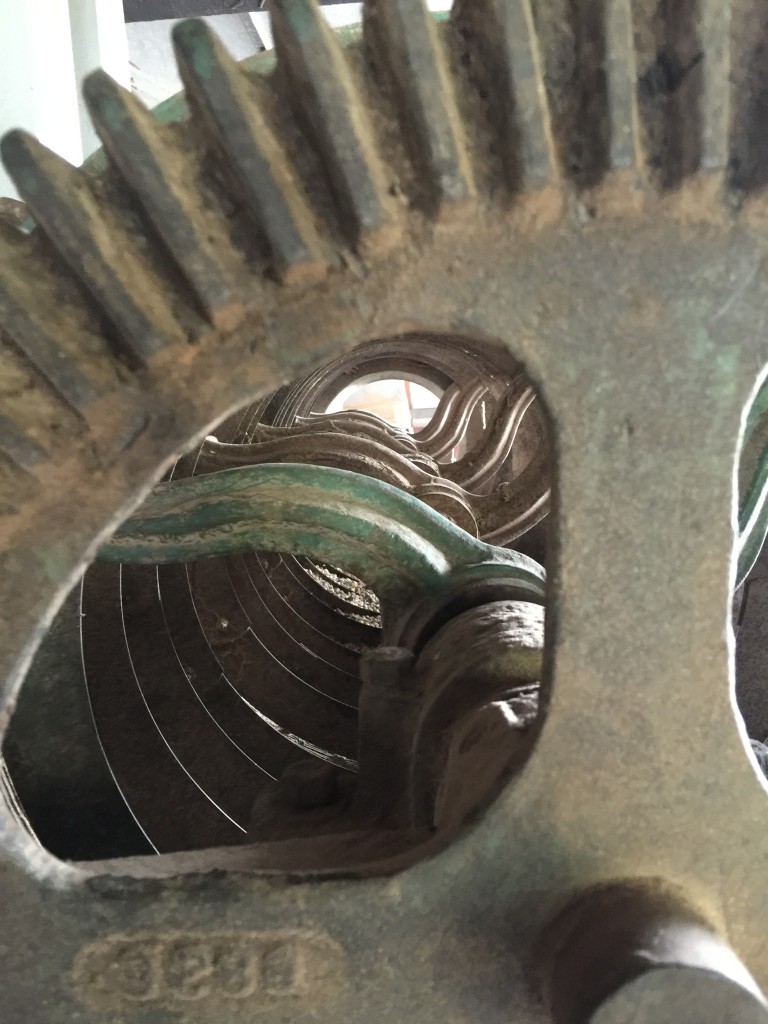
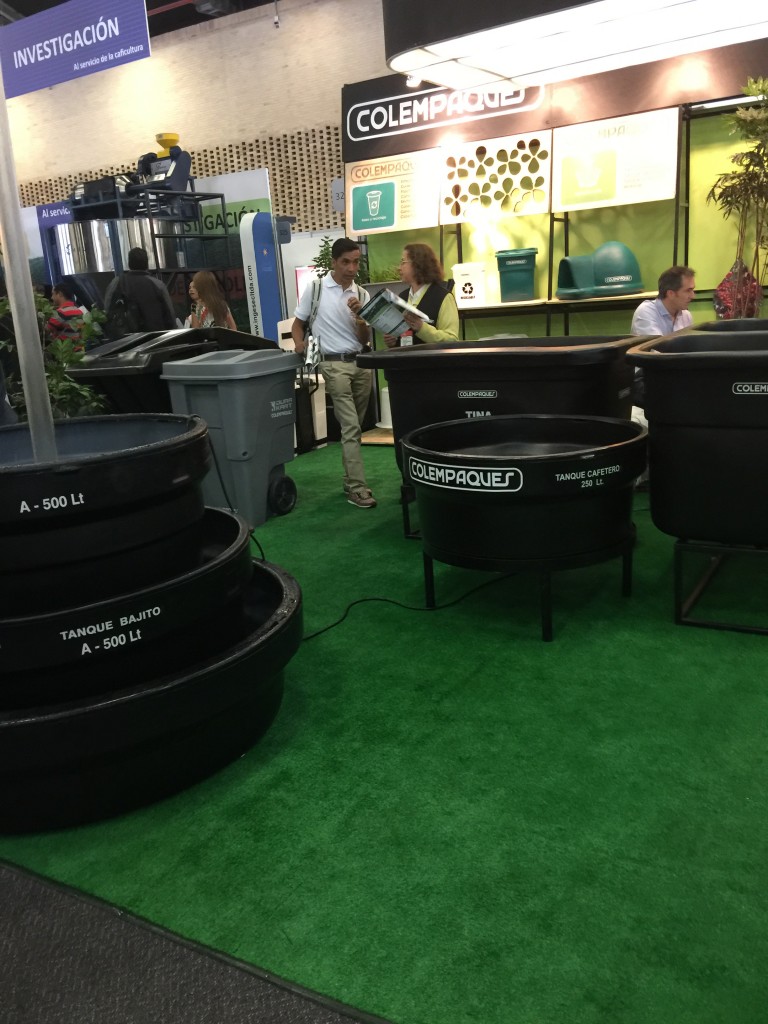
No comments yet.